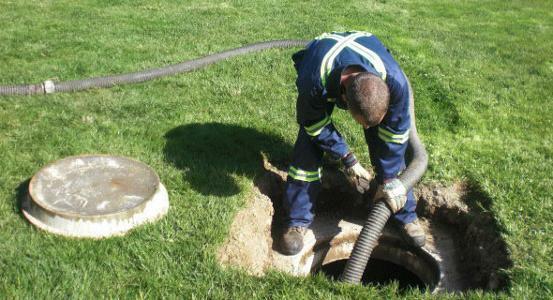Notifications
ALL BUSINESS
COMIDA
DIRECTORIES
ENTERTAINMENT
FINER THINGS
HEALTH
MARKETPLACE
MEMBER's ONLY
MONEY MATTER$
MOTIVATIONAL
NEWS & WEATHER
TECHNOLOGIA
TV NETWORKS
VIDEOS
VOTE USA 2026/2028
INVESTOR RELATIONS
DEV FOR 2025 / 2026
ALL BUSINESS
COMIDA
DIRECTORIES
ENTERTAINMENT
FINER THINGS
HEALTH
MARKETPLACE
MEMBER's ONLY
MONEY MATTER$
MOTIVATIONAL
NEWS & WEATHER
TECHNOLOGIA
TV NETWORKS
VIDEOS
VOTE USA 2026/2028
INVESTOR RELATIONS
DEV FOR 2025 / 2026
About Me
 Guardian Angel
Guardian Angel We provide quality home inspection services in Palm Beach, Broward St Lucie counties, Orlando Central South Florida Call us today at 561 512 7854
 Guardian Angel -
14 hours ago -
Business -
#painspecialistindelhi
inspection services
septic inspection
-
11 views -
0 Comments -
0 Likes -
0 Reviews
Guardian Angel -
14 hours ago -
Business -
#painspecialistindelhi
inspection services
septic inspection
-
11 views -
0 Comments -
0 Likes -
0 Reviews

If your home relies on a septic system, keeping it in optimal condition is critical. One of the most effective ways to ensure your system works properly is through a septic tank inspection. But how often should this be done? In this blog, we'll explore the ideal inspection frequency and why it’s so important to keep up with this essential maintenance task.
A septic tank is an underground wastewater treatment system commonly used in homes that aren’t connected to a municipal sewer system. Wastewater from toilets, sinks, and laundry drains into the tank, where solids settle at the bottom. Liquid wastewater (effluent) then flows out to a drain field, where it is filtered naturally by the soil.
If your septic system isn’t functioning properly, it can lead to unpleasant and costly issues—such as sewage backups, foul odors, and environmental contamination. That’s why regular septic tank inspections are so vital.
Industry experts typically recommend a septic tank inspection every 3 to 5 years. However, certain factors may require more frequent checkups. Consider the following when determining your schedule:
Larger families produce more wastewater, which can overwhelm the septic system. More people means more flushing, more laundry, and more showers—all of which place a heavier load on your tank. If you have a large household, consider more frequent septic tank inspections.
A smaller septic tank fills up faster, increasing the risk of overflows or backups. If your tank is on the smaller side, inspections should be scheduled closer to the three-year mark or sooner.
Homes with high water usage—due to frequent laundry loads, long showers, or multiple bathrooms—can wear out the system faster. Heavy water use might require annual inspections to ensure everything is running efficiently.
Older septic systems are more prone to wear and malfunction. If your system is more than 20 years old, yearly septic tank inspections are a smart investment to avoid costly repairs or replacements.
Skipping a septic inspection can lead to serious problems. Here are some of the top reasons why staying on top of maintenance is crucial:
Catching issues early can prevent small problems from turning into expensive disasters. A simple inspection can save you thousands in repairs by identifying leaks, blockages, or tank damage before they escalate.
A malfunctioning septic tank can contaminate your home’s water supply or leak raw sewage into your yard. Regular inspections help maintain a safe and hygienic environment for your family.
With routine inspections and pumping, your septic system can last 20 to 30 years—or even longer. Regular maintenance extends the life of the system and delays the need for a costly replacement.
Leaks from faulty septic systems can pollute groundwater, rivers, and lakes. A timely septic tank inspection helps prevent environmental damage and ensures compliance with local regulations.
A professional septic tank inspection involves a detailed check of the system. Here’s what typically happens during an inspection:
Visual Assessment: The inspector checks for signs of leaks, pooling water, or damage around the tank and drain field.
Tank Access and Evaluation: The lid is opened to check water levels and ensure the baffles (which prevent solids from leaving the tank) are intact.
Sludge Measurement: A tool is used to measure the sludge and scum levels inside the tank. If the tank is nearing capacity, pumping may be recommended.
Drain Field Check: The inspector ensures the drain field is absorbing wastewater correctly and isn’t flooded or emitting foul odors.
Maintenance Recommendations: Based on the inspection findings, you’ll receive guidance on when to pump the tank or schedule follow-up services.
While routine septic tank inspections are typically spaced a few years apart, some warning signs should prompt an immediate inspection:
Slow Drains: Gurgling sounds or sluggish drains may signal a clog or full tank.
Unpleasant Odors: Strong sewage smells indoors or outdoors can indicate a problem.
Standing Water: Water pooling in your yard, especially near the tank or drain field, is a red flag.
Sewage Backup: If waste backs up into your home, it’s a serious issue that needs immediate attention.
Routine septic tank inspections aren’t just a recommendation—they’re a key part of responsible homeownership. For most households, an inspection every 3 to 5 years is sufficient. However, if you have a large family, an older system, or high water usage, you may need to check your system more often.
By investing in regular septic inspections, you can avoid unpleasant surprises, save money in the long run, and help protect the environment. If it’s been a while since your last inspection—or if you’re seeing signs of trouble—don’t wait. Contact a trusted professional to assess your system.
For homeowners in need of reliable service, Guardian Angel Inspection Services offers thorough and affordable septic tank inspection options. Their certified professionals will ensure your system is safe, compliant, and functioning at its best.
